Intro
Contents
So…I spent the last four months listening to the world’s best linear power supplies. If you’re looking for power supply upgrades for your gear, this review may help point you in the right direction.
Any audiophile knows: having high-performance linear power supplies paulis essential for an enthralling listening experience. Sure it can sound decent and engaging without one – but you simply won’t be able to achieve something closer to life. Check out the reasons why here.
But just buying any linear power supply isn’t always going to sound better. It has to be synergistic with your other components – and personal proclivities. The motivation for this massive survey is to guide you to a power supply that may work for you – and your gear.
Keep in mind, my favorite power supply might not be the same for you. Simply because my gear and goals might be different. And everyone connects to music in their own subjective way. Personally, I enjoy a richer, warmer, and denser sound. So consequently, my “Cons” may be your “Pros.” And that’s completely fine.

The Shootout
These power supplies were recommended by you, the Audio Bacon readers. I’m not very proactive on the forums so I’m not always aware of what’s out there. It’s interesting to hear about your preferences and what you have connected. I’ve asked every single one of the recommended vendors to send in at least a 5V supply (12V optional) and 95% of them responded. I believe they were curious to see where everybody stacks up. And I’m the only one crazy enough to make the comparisons.
First, I have to thank all the designers who were brave enough to participate in this shootout. I received no compensation for this review and the only ones I purchased were the SBooster and HDPlex 300W. This shootout was just done out of sheer curiosity. Also, a huge thank you to the fan who was gracious enough to loan me his Sean Jacobs DC4.
Secondly, know that none of these power supplies are perfect. Some will work better in darker, brighter, or flat systems. And some just pair better with specific equipment. Generally, my opinions here were very consistent across the various pieces of gear I evaluated. If one power supply were thick and dense with a specific DAC, it was also relatively thicker and denser on a USB PCI card. My goal is to help point you in the right direction.
Where are the measurements?
Many of these manufacturers like to boast about their power supply designs. Giving various (mostly engineering) reasons why theirs is better than the others. And they should! But like in all my reviews, I only care about how it sounds subjectively. You could talk about all the science you want – but if it’s not a sound the listener wants…what’s the point? It could have low noise and maximum current delivery – and still sound like shit to certain people. That said, if you want to see measurements, Audio Bacon isn’t for you. Try tofu bacon instead.
Setup
- Software: Tidal, Spotify, Qobuz, Euphony, Roon, PGGB (for upscaled files)
- Evaluated equiment
- 12V
- Opto DX
- Chord Electronics Hugo M Scaler
- RME ADI-2 DAC
- 5V
- Chord Electronics Qutest (orange/red filter)
- JCAT USB Femto and XE cards
- JCAT NET Femto and XE cards
- 12V
The same generic power cord (one of the better ones) was used on all the power supplies. I figured most people won’t have fancy power cords they can hook up to each of their power supplies. Some of these power supplies will be more sensitive to power cords over another so if you’re looking for power cable recommendations, check out my review here.

Equipment
- Snake River Audio Cottonmouth Signature power cables
- LTA Z40
- Danacable TruStream USB
- FTA Callisto USB cable
- Iconoclast UPOCC XLR and RCA interconnects
- Emerald Physics 100.2 SE amplifier
- Chord Electronics Hugo M Scaler
- Chord Electronics DAVE DAC
- Synergistic Research Tranquality Base UEF
- Symposium Acoustics platforms
- SOtM sNH-10G Ethernet switch
- SOtM iSO-CAT6 adapters
- WAVE High Fidelity STREAM BNC cables
- Innuos Phoenix USB reclocker
- The Linear Solution Reference Ethernet cables
- Innous ZENith Mk.2 SE server
- JL Audio F110 V2 Fanthom subwoofer
- LSA Statement loudspeakers
- Audio Art Cable Statement e SC Cryo Speaker Cable
- IsoAcoutics Aperta stands
- Custom music server powered by a HDPLEX 400W (not part of review)
- Ryzen 3600, 3700X, 3900X
- The faster the CPU, the more grip and clarity. The slower, the warmer and denser it’ll sound.
- Streacom FC-9 Alpha chassis
- ASUS ROG Strix X480-I motherboard
- AMD Ryzen 3900X CPU
- Apacer ECC DDR4 wide-temperature RAM, 8GB
- Intel Optane 58GB storage for OS
- HDPlex 800w DC-ATX converter
- Ghent Audio 24P-24P ATX cable harness (OCC 7N copper)
- Ghent Audio M.2 to PCIe adapter
- Euphony license (includes Stylus)
- Mojo Audio Internal Regulator Module
- Ryzen 3600, 3700X, 3900X
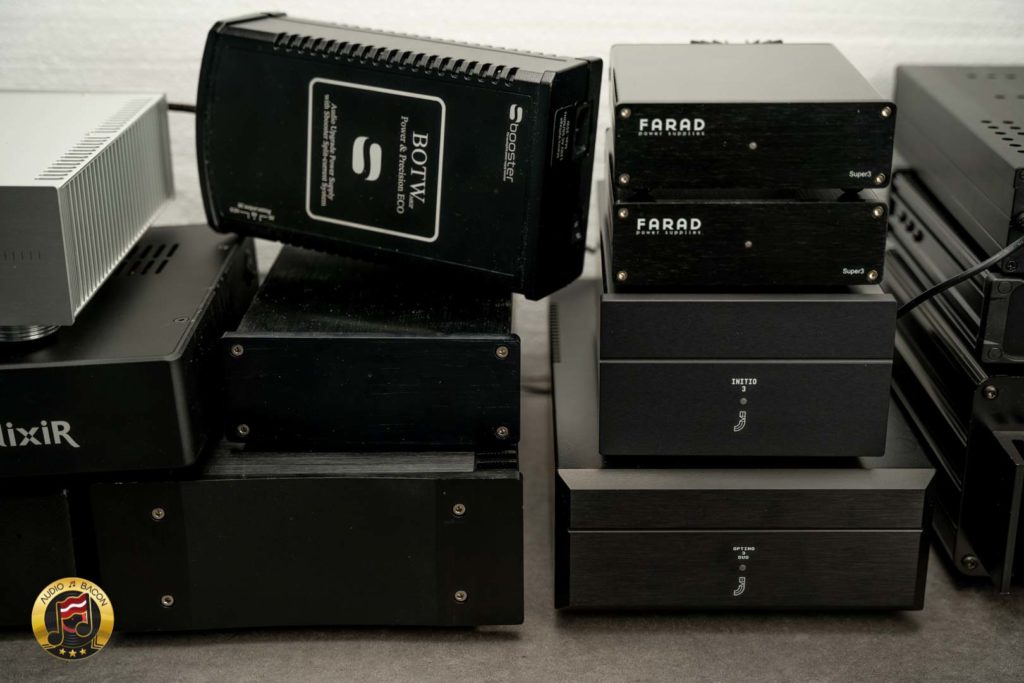
Procedure
All my listening notes are subjective. For each piece of gear, I write my impression of each power supply with quick, full-day listens, and staggered listening (waiting a few days to listen again). I do randomize the order of the power supplies each time. During each session, I rank each according to detail, tonality, body, and personal preference. As I do with cables, I’ll occasionally swap back for stock power supplies as a sanity check.
At the end of the review, I compile all my notes (took a couple of weeks) and ensure everything was consistent. If there are any discrepancies (which one had more bass, bigger soundstage, etc), those power supplies are reevaluated in a heads-up comparison. Luckily, there weren’t many and the major ones I did find were because I wasn’t using the same DC cable. All of this is to ensure consistent impressions across a multitude of equipment and configurations. If you don’t see a specific comparison here, then I probably didn’t make them directly. But the holistic summary should be sufficient.
Since this is a power supply review, a lot of time is spent powering on and off these components. I have to wait for the OS to boot or the amplifier to completely shut off (when evaluating DACs). So in many ways, much more time-consuming than the power cable shootout I did a while back. Ranking them was also very difficult. Some power supplies had a very similar level of bass so required more listening. This also goes for resolution, soundstage, etc.
This experiment involved a large number of permutations and was an enormous undertaking. I’m only human so if you see any inconsistencies or errors, please let me know in the comments or via email.

Final Thoughts
These power supplies are in no particular order. If there are LPSUs you’d like to see here, please let me know and I’ll add them at the bottom. I might add them to this list and in the sortable ranking table.
As far as the “best” power supply, I honestly couldn’t settle on a specific one. Over time, I actually swapped between many of them and enjoyed them all for different reasons. For instance, I really liked the Paul Hynes SR4-12 and Fidelizer Nikola2 for their tone, the Sean Jacobs DC4 for its “live” molding, Mojo Audio Illuminati v3 for its spatial realism, and UpTone JS-2 for its fun energy and treble. I’m also consistently impressed by the technical abilities of the Plixir Elite BDC and seduced by the intimacy of the JCAT Optimo.
Rankings
As with all things audiophile, you can’t have it all. Each of us has to decide on a balance that works for us. But I’ve created a table where you could sort by what’s important to you. One thing becomes clear though: Most of them will sound much better than your stock power supply.
Without further ado, check out the criteria and personal rankings here. I do prioritize a warmer/darker tone, so my personal rankings will reflect that. But they might not be your preference (I know many of you prefer transparency or soundstage over tonality).
If you have any experience with these power supplies, please let me know in the comments. This is just one man’s opinion and it’d be interesting to hear what you think as well.
Want to hear for yourself? Get the Linear Power Supply Sound Pack: Recordings of 14 power supplies, 7 music snippets each.
Want more comparisons like these?
The only reviews that actually matter are comparative ones. And I have a reputation for taking them to extremes. I felt power supplies are so critical in elevating a sound system – that this was a worthwhile endeavor. My hope is that this advice is actionable and it’ll save you time and money.
Although it was worth it, I burned out. It also took away precious time with friends and family. No sane person wants to spend this amount of time listening to the same 30 seconds of tracks on repeat, across permutations of 14 power supplies, every day…over the course of months. Not to mention photography, videography, and all the editing.
So if you’d like to support the work I do, here are a few ways. And leave a message on what you want to see in the next shootout. I’m thinking amplifiers.
Support Audio Bacon
Grab some Audio Bacon Merch!

Subscribe to Audio Bacon on YouTube!
I plan to focus primarily on videos from this point forward. Helping me grow my channel will help tremendously and make what I’m doing more sustainable.
Also, the video review will be up soon which will include sound clips of the power supplies. Make sure you subscribe and hit that bell to be notified when it’s up.


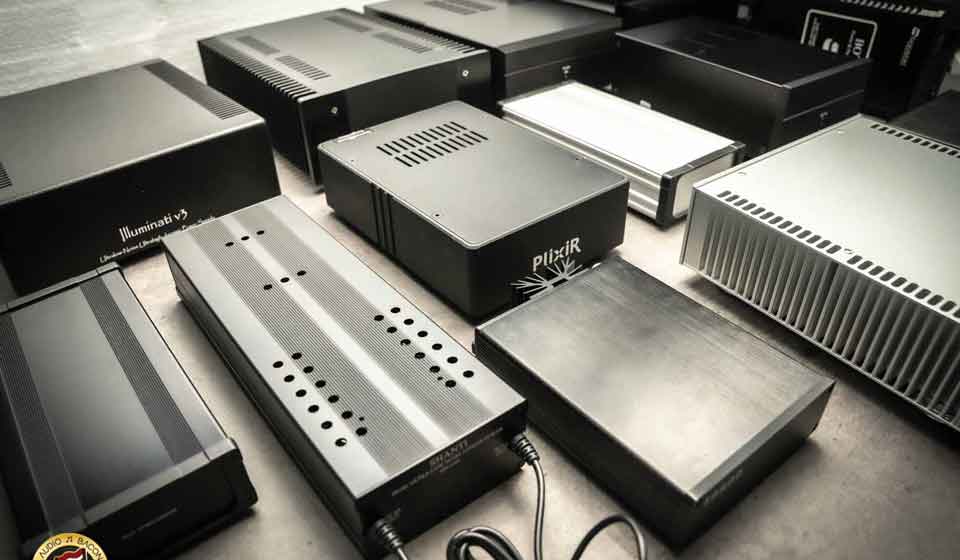


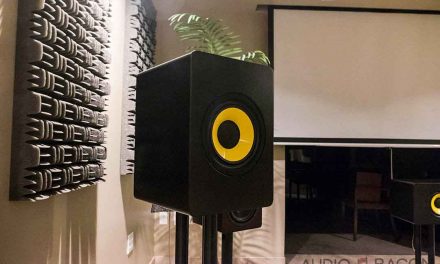
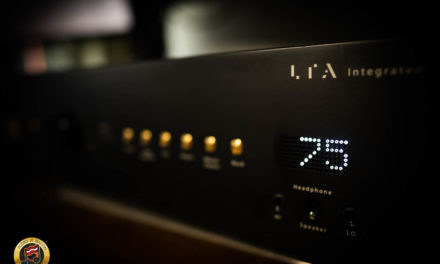
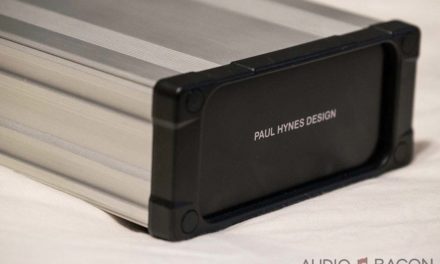
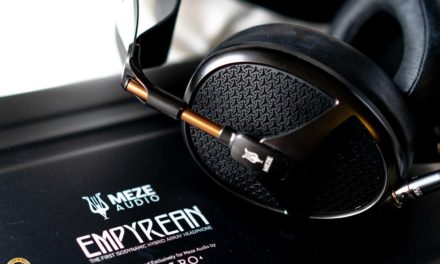

Well Jay, you have only just gone and done it again. Another mammoth review. Don’t you ever sleep!?
As a Dave owner I was lucky to obtain the first production version of Sean Jacobs DC4 and have been using that ever since with a big grin on my face every time I use the Dave. It has possibly been the biggest improvement to the sound of my system (with the possible and honourable exception of my own Wave High Fidelity STORM dual BNC cables of course!).
However all of that is about to change because Sean has been kind enough to loan me a prototype of his new ARC6 version of the DC4 power supply. Having had the Dave all this time I was not aware of any deficiencies. That was until I plugged in the ARC6. As you say in your review the DC4 is a master at revealing the texture of instruments but now the ARC6 version has a transient speed to go with that textural information. It is a quite uncanny combination. The bass is also deeper and more powerful and yet manages to more detail and information in it at the same time.
You will gather that I like the ARC6 upgrade to the DC4 for the Dave. It is a huge upgrade to the Dc4. I understand that existing owners of the DC4 can have theirs upgraded to the ARC6 version by returning to Sean or to one of his agents in the USA or EU.
But that is not really why I was minded to put pen to paper in response to your review. A few months ago I did my own private shoot out of power supplies powering the Qutest. These included the Sbooster with Ultra Mk2 upgrade, Farad Super3, Allo Shanti, MCRU, Sean Jacobs DC3, PowerAdd battery, iFi, a cheap LPS from China and of course, because I could, the 5V rail from a DC4. Broadly I agree with all your comments and in the end I used the Farad Super3, not because it was the best but because it was a reasonable amount of money to spend for the performance gain with a Qutest. One thing to say about the value for money Allo Shanti is that if one has the necessary skills it takes a leap forward in sound quality if the supplied captive leads are removed from the circuit board and GX16 sockets are installed allowing after market DC leads.
I have more recently listened again to a DC4 powering the Qutest and although first time around I rejected the idea of a single rail £4,000 DC4 powering a £1.200 Qutest as being any where near a sensible decision I have now begun to wonder whether in fact it brings the £5,200 combination up to a level of similarly priced DACs and I think it might just do that. Such is the benefit of the DC4 with a Qutest.
So, thanks once again for the huge undertaking and it is nice of course to see you still using my WAVE STREAM cables with your Dave. 👍
Nick.
I would be curious to hear the ARC6! Is there a tonal color difference between DC4 and ARC6? More shine?
I agree, the Farad Super3 is a great value, especially if you enjoy that more liquid and smooth sound. From memory, I thought the Mojo Illuminati V3 paired well with the Qutest. And I could definitely hear the potential of the Shanti, the price is incredible for its performance (but critical listeners won’t be happy). GX16 sockets with custom cabling would be interesting.
Have you tried batteries?
I run my RME ADI-2 fs DAC and streamer on pure LiFePo4 cells (without any battery management electronics of course). The DAC uses 4*3.2V 20AH cells in series, and the streamer 2 of the same in series. The batteries last more than a day so I charge at night when sleeping.
It would be interesting to know how batteries like these compares to the better power supplies.
Yeah, I was thinking about including batteries as well. Which specific ones would you like to see?
I think the more “pure” cells you use the better, and not small AA or similar batteries. Here is the ones I use:
https://shop.gwl.eu/LiFePO4-cells-3-2-V/LiFePO4-High-Power-Cell-3-2V-20Ah-Alu-case-CE.html
Of if you want one ready made for RME DAC, this one works (its just 4 cells in series), should be similar available in NA if that’s where you live: https://shop.gwl.eu/LiFeYPO4-batteries-12V-1-1/Lithium-Battery-LiFePO4-12V-20Ah.html
But basically you want low internal resistance in combination with pure cells. For example, a power pack used for mobile phones sounds a lot worse (they have switched DC regulators inside to get to 5V).
It also important to stay away from “battery management”, even if you risk damaging the cells if overcharged or undercharged. Those battery managements are filled with switched cheap electronic.
I then have 18 awg OCC coppar cables with cotton sleeves as only insulation, soldered to a DC connector of copper.
A whole nother world there! I’ll look into it.
Yes, it is. I like the sound of my LiFePO4 batteries though, and LPS manufacturers often use batteries like those as “reference” to compare with (or so I have heard).
It’s also worth mentioning that Stromtank (a really expensive HiFi power gear) uses LiFePo4 cells for their “magic”, but enough of them to also drive power amplifiers.
You should include some of Gieslers power supplies. Aussie seller very high quality supplies. Kraftwerk 2
https://www.gieseler.com.au/product-page/kraftwerk-ii
Not even a Contact Us email address. Doesn’t infuse confidence unless you’re inside Australi and can call them.
Would been nice if u would included Ferrum Hypsos!
https://ferrum.audio/hypsos/
They said they would send the Hypos in…but I never received it. Will check again.
Amazing post Jay. The table of results especially. I’d also love to know where the Hypsos ranks if they ever send you one.
Thank you! Yeah, I haven’t heard back from Hypsos. Oh well.
Hello,
Maybe invest in some gear to measure them Jay?
Best regards
Geoff
Pachanko Stellar LPS would have been also interesting to see compared with all these.
Request sent.
Cool : )
Please consider the SOtM SPS-1000. I heard its very good.
great work – thanks a million!!
comment to the Sbooster PSU: i kind of relate to your findings (using mk 1 version), adding (now unavailable) Padis fuse and Furutech Absolute Power adds LIVE to it. yet, possibly also to all other PSUs tested here
Yeah fuses could make all the difference…maybe I’ll test those at a later time.
Hi there,
I know you cannot review everything under the sun, but I’ll selfishly propose you review the ISOL-8 Prometheus LPSU. Their power conditioners are great and I would be curious to see how their power supply compares with the others.
Amazing amazing review; very well done! Thank you!
So, farad 3 isn’t that good?
What fuse and iec did you get within test unit?
My Farad Super 3 is custom modified, but I think it performs very well. Along w/ Jay I am factoring in price and its incredibly diminutive size.
I am also curious about the remarks in comparison to other PSUs, which cable was used: silver or copper?
Listening was primarily done with the copper cable. Still great for the price, especially if you enjoy a full bodied and smooth sound.
Jay,
This is an incredible review and many thanks for doing this for all of us. I have one question though, what was the DC cable used between the LPS units and the JCAT PCIE card?
Thanks,
Bob
My pleasure. I used the DC cables provided by the company. A few of the LPSs offer optional upgrades (Farad and Plixir). I also used a custom one for the SR4/SR4T (UPOCC copper instead of silver).
hi jay,
what a great review again. And what a lot of work this must be to do this as correctly as possible.
I would like to add something about your tests.
A DC and power cable can make a huge difference and therefore give a different rating.
With the Farad super3 I have quite a lot of experience in that area and with fuses etc. before that with IFI,S booster MK1 and MK2 and Paul Hynes SR4T. and now several Farads Super3 in use. for me here the SQ of the farad is unbeatable.
What strikes me about your tests is that they play for a few days at most and then again to do the comparisons.
From the synergistic orange fuse that you had put in the farad, I know that it has to be played for at least 1 month for the right result. in the meantime, he himself may start to sound worse.
With regard to the farad itself and its level2 cables, this minimum is at least two weeks to play in. And keep it on continuously.
I can certainly agree with your observations, recognize that too, but leaving everything on for at least a month gives an even much better sq.
This is much more important with the Farad with orange fuse and furutech inlet and level2 copper DC cable than with all other power supplies I’ve had in the house.
So I’d suggest trying these run-in times voor the Farad and leaving him on all the time and reviewing it again. The difference in my system is in any case very large.
Thank you! I understand the DC could make a significant difference, but I try to focus on the elements that don’t change between cables. In the case of the Farad, the silver and copper level 2 cables.
I have not tried any fuses and that could make an even bigger difference. The ones in the review unit were SR Orange. I slightly prefer the SR4T due to the the more open and textured sound. But the Super3 is meatier and more contoured…and admittedly has better color. I just feel the Farad smooths over some of the finer grain details. As long as you enjoy it, it doesn’t matter.
I kept all power supplies plugged in for the 4 months. Depending on which ones I’ll be evaluating, I’ll hook them up to gear (not under test). You may be right and that the Farad needs more time to break in. But generally the tone isn’t for me – especially with the silver cable.
I’m glad you enjoy the Farad Super3! It’s amazing bang for your buck.
Jay,
Just wanted to show utmost appreciation for the tests you’ve conducted! I must admit I was hoping to see one of the new SR7’s in on the bench. During the more recent PHD days Paul released larger SR7s with 12v/12a an 19v/10a railed with option for “Turbo” which was supposed to bring the production units more in line with the dual regulated supplies. Would have loved to see where it fits into the puzzle. Unfortunately it will be next to impossible to obtain one unless you find one used at this point.
Also, I have built up a dual rail 5v LPS based on MPAudio ALS-HPULN power supplies. Its fairly simple to do so using their chart to size up the proper transformer specs. These are literally just IEC inlet, transformer, LPS module, output. It would be great to hear your thoughts on those. I’ve got some CAD mock-ups to help you get started with a build if you’re interested in building one up.
Also, you may want to try some of the newer unregulated power supplies that are storming the DIY community to power your server! I think you’d enjoy hearing the impact of this + replacing the HDPlex 800W DC-ATX with the Taiko DC-ATX.
Cheers to a job well done.
-Rob
I was thinking about DIY’ing my own supplies. I’m open to giving it a shot! jay@audiobacon.net
I’ve heard great things about the Taiko DC-ATX…is there specific components people are pairing it with? (motherbaords, cpus, etc).
Hi Jay,
Fantastic. I will send you my CAD mock-up which you can then send to DIYAudio Store to have them CNC an enclosure for you. This same enclosure has been used in two of my DIY builds: DC3 dual rail LPS (For network switches), and MPAudio ALS-HPULN Dual rail 5v for powering my Femto clocked NVME and CoreAudio P24 USB card.
As for the Taiko DC-ATX, there is no specific recipe. Many of us have experienced the substantial benefits of powering single CPU and dual CPU builds with the Taiko instead of the HDPLex. It is A LOT more transparent and efficient than the HDPLex. In my case, I use it with an i9 9900k CPU / Gigabyte Designare Z390. Others have had luck with the newar z490/z590 based i7/i9 builds. One can also choose to embark upon a larger journey using the same CPU/motherboard as the Taiko SGM Extreme (there are some major SQ benefits in doing so but I have not done this myself yet).
Will send you more details via email!
Cheers,
-Rob
I have good luck with Teddy Pardo units, one for a Chord 2Qute, and one for my Raspberry Pi / HifiBerry Digi + combo.
Never heard back from Teddy. Glad you enjoy it!
Hello Jay,
I am a builder of custom linear power supply in Hong Kong
Glad to see your shootout of audiophile LPS
would you have time to also review my creation?
I will send a unit to your location for review
please drop me an email, will show you photos and the specifications
Cheers
Please email me at jay@audiobacon.net
Hi
I sent you two emails in the last two days
Did you receive them?
Hi Jay,
why don’t you post my comment which i sent yesterday?
I see a a bunch of small LPS on the market, but the bigger ones (150watt+), not so much.
Keces P8 (especially the 8amp * 1 unit) has been my best sound.
My 200watt HDPlex isn’t even close.
Hello Jay
Fantastic shoot out !! Thanks
I would like to emphasize that Paul Hynes power supplies is closed.
The company was taken into liquidation now.
The curious thing to me on this shoot out is that it didn’t test where I’ve experienced the biggest impact with LPS supplies… powering the USB source server. Powering a USB card is a bit too late, degradation has already happened.
Hi Jay,
First of all my total admiration for this massive effort. lately your site became a bit more silent and I figured your time is precious and after all you allready put out in the past years it was time to slow down. You were working even harder! This information is worth gold, thanks so much for sharing.
To my question now. I recently had 2 out of 3 of my LPS die. They lasted 3 to 4 years. Did you ever consider or evaluate life expectancy for a LPS.?Mine were in the $4-500 price range and I was told to expect this. Some users think apparently the more expensive ones of $ 1000+ could/should last 10 to 20 years I was also told.
Is there anything more clear you can share about this?
Love the reviews. Just wanted to chime in and say that the biggest performance killer of the JS-2 is the stock DC cable it comes with. Change the lean sounding stock Canare 4S6 with a custom, shorter Canare 4S8 (or better) and throw in a Synergistic Orange fuse, and the power supply is transformed.
I guess you could say that about all of the Power supplies above, but it is a shame that the cable the JS-2 ships with limits it so.
Yeah, it’s a bit lean. I’ll have to try that!
I believe the DC cable has a huge impact. I’m still contemplating purchasing a JS-2 and will explore cables afterwards. Thanks for the rec!
Jay, where is the Plixir sold in the US please?
I wasn’t able to find a vendor. However, James Soh at Plixir will sell and ship directly to the US (I’m in TX) without issue. I’ve bought 3 Elite BDC’s from Plixir. Love them.
Jay, GREAT REVIEW! What a big lift!! The Plixir Elite BDC with Statement cable is now powering my Qutest, my Lumin D2, and my Roon Nucleus+ revA. It’s nearly impossible to overstate the improvements!!
Hi Jay,
Why the SOtM sPS-500 is not included in this review?
Hey Jay great work! I am about to buy a LPSU for my Anubis Dac and not sure how to go because there are so many. One that seems to stand out a bit in terms of price/ value is the mcru psu. Have you heard/tried it yet? It seams promising, only dave the guy that sells them isnt up to date when it comes to customer relation.
Cheers!
Sorry I haven’t heard this PSU! Will put it on the list.
Great review, impeccable work, I found this LPS very interesting, maybe here I can get an answer if it will sound good in my setup: I use a neutral and half-warm sound DAC, with a bit of smoothness (Topping e30), a neutral and drier amp (Allo Volt+D) and an entry level speaker, also neutral half-warm (Pioneer SB22-LR), the midrange of E30 is a little bit thin (but with a little EQ I can ease it a little), did you say in this review that there is some grain in the midrange of this LPS and a cool tone, could this generate a bit of harshness and annoyance in the sound?
Which LPS? If your goal is to add more body and warm it up, sort by “shape.” The JCAT ones might be a good fit.
Hi Jay,
Thanks again for taking the time to perform this outstanding LPS evaluation and shootout. In the context of what is the best sounding LPS (for your sonic preferences) on an audiophile network switch, have you evaluated and drawn your personal conclusion? In my particular system where my digital upstream is Cisco Home Network Switch > CAT6 (or Fiber) > EtherRegen/Uptone 1.2 LPS > Gobel Network Cable > Aurender N30SA, I’m exploring areas where I can make an improvement ranging from adding an additional audiophile network switch, replacing the Etherregen / Uptone 1.2 LPS, adding a Cybershaft Clock, etc. Based on your evaluations to date, assuming cost was not a consideration, what upstream hardware signal path chain have you determined sounds best (per your liking) vis-à-vis network switches, power supplies, clocks and cables?
I will be exploring this real soon. Finally got my Gershman Speakers so I’m setting them up in a “fresh” room without an easy way to get a wired connection in. I might have to order another fiber line just for that side of the room lol. But as far as Ethernet cables, I do prefer the The Linear Solution Reference ones. I still use SOtM ISO-CAT6 adapters. Never heard of the Cypershaft Clock. How do you like it?
Thanks Jay great review, I need to bookmark this as a reference. Didn’t you miss Teddy Pardo ? 🙂
Glad you enjoyed it! I did contact him, no response 🙁
Hey Jay, thank you for doing these comparisons. They give me at least somewhat of an idea of what to expect. I currently have both the Uptone JS-2 and Jcat’s Optimo 3 Duo. Have you ever tried using two power supplies from your list in your chain at the same time? The reason why I ask is because I had tried using the JS-2 to power both my Jcat usb xe card and xe net card and while I really liked the sweet and nimble tone, having the JS-2 power both at the same time seemed to stretch the sound too “thin”. The unit got extremely hot (no exaggeration) as well, when powering both Jcat cards.
I than switched the JS-2 for the Optimo 3 Duo and while the Duo retained it’s sonic integrity when powering both cards, I found myself missing the sweet tone of the JS-2. The Optimo 3 Duo had bass in spades, (sometimes even fatiguing amounts) as well as body and tonal density, but I found myself gravitating towards the JS-2 just slightly and I began to wonder if relegating both power supplies to power each card could result in the best of both worlds scenario. The idea felt like a sort of first world solution/approach, where you just throw more money to fix a problem… but ashamedly, I think it worked. It gave me a sound that had body and density while still possessing the sweet tone of the JS-2.
The setup currently is the JS-2 going to the USB card and the Optimo going to the Net card. I had upgraded both fuses on both lps’ to the SR purple fuses. I would be very interested to know if you had tried something similar and what your impressions are.
-Jon
Hey Jon! My impression of those two supplies is very similar to yours. The JS-2 does have a sweeter tone (the JCAT stuff is darker). Depending on the power supply, driving two devices could result in a flatter, thinner sound. The beefier power supplies seem to handle multiple devices just fine. To answer your question, yes. I would recommend trying all the permutations. JS-2 on one of the cards and Optimo on the other, etc. And see if you can reach a balance. More often than not, the darker stuff will blanket the more nuanced gear. You won’t know until you listen for yourself. There are way too many variables to be definitive. Would love to hear what your thoughts are in your experiment. What do you hear?
Hey Jay, I just received a Nikola 2 lps and let me just say, it blew away all of my other linear power supplies that I own in tone and “musicality”. I have the JS-2 going to the jcat net card and the Nikola 2 going to the Jcat usb. You were spot on about the hi hats and cymbals on the Nikola, just amazing. The Nikola 2 is definitely my favorite of the bunch.
Glad you enjoyed it! I ended up purchasing the Nikola 2 after the review because its reference level tonality.
Very curious if you’ve had a chance to hear the ifi elite power supply. We all can’t afford $600 power supplies on all of our gear. The Elite looks worth a review at $300
I have not. Will include in the next one!
I’d second this. I’m using it for my EtherRegen.
The ifi Elite is easily available on both sides of the Atlantic, and though not apparently a linear power supply it does seem to be a worthwhile contender here. In fact, their site claims it to output lower noise than most LPSs.
However, there doesn’t yet seem to be any published reviews of it, so perhaps a great opportunity to generate site traffic for AudioBacon.
That’s an interesting suggestion. It certainly would be interesting to see how the Elite compares to other linear power supplies. I’m curious to know what the results would be but I haven’t heard from iFi in a while.
Hi Jay !
Now I have 2 power supplies in front of me, Ifi elite and sbooster BOTW for my switch EE8, in general they are the same level but the presentation is different.
Ifi a lighter and more transparent presentation, not to be confused with the lightness of the sound, the sound is tight, detailed with a good stage.
Sbooster emphasis on the lower middle to the detriment of the lightness of the sound and its detail.
–
Maybe BOTW mk 2 with its ultra mk 2 will be better, but … there will always be something better and not try everything, if the size of the power supply or price is important, then ifi will be an excellent choice given its price on the secondary or with dealer discounts.
And of course, the difference on the switch may not be as dramatic as on the DAC’s/streamer’s.
From the sound of it, I’d probably prefer the BOTW personally, but to each his own. I’m sure you could find a place in you system for both.
Could you possibly review the Keces P-8 LPS and compare it to the UpTown Audio JC-2?
Didn’t hear back from them.
Such a good read and source, thank you!
Wondering if you’ve had a chance to to try the sbooster with the Ultra MKII add on?
I haven’t tried the add-on. 🙁
You should definitely add one of the highly acclaimed newcomers, the ifi Power Elite. And also really try to get your hands on a Hypsos to make this review complete.
I’ll give it a shot! Still trying to get the Hypsos in. Will let you know.
Antipodes Audio offered internal power supply upgrades for their legacy server/players – changing out the existing LPS to their “Hybrid-Linear/SMPS”.
I found the upgrade to be a substantial improvement in sound quality – at least a 15% expansion of soundstage.
So I ordered their external stand-alone 12V hybrid version [S60 model] and found it too, to deliver a significant jump in SQ over my over-built, homemade LPSs using Bellison regulators powering Uptone Audio EtherRegens.
I then purchased the Hypsos to bypass the internal LPS of my SingXer SU-2 DDI and heard the same level of improvement. Antipodes claims the hybrid approach is a “faster” supply, able to deliver better transient current delivery needed in many digital circuits but without the noise of a pure SMPS.
I then tested the Antipodes S60 vs the Hypsos with the EtherRegens and found them very similar with the Hypsos being half the price and offering the flexibility to vary the voltage and providing 3X the current.
I’ve tried using up to 1KW toroids, 80,000uF of Mundorf electrolytics, 2A to 10A chokes after the rectifier and this level of overbuilding did not improve the sound in my setup. And certainly didn’t come close to the Antipodes or Ferrum Hypsos hybrid designs in terms of SQ.
I have been told that one aspect to the best LPSs is using multiple smaller value caps to lower the impedance. I have not made the effort to substantiate this but I’ve seen it executed in the Phoenix USB Regen and the Mutec Ref 10.
Although I’m not sure that a “fast” supply is necessarily needed for powering an OCXO as a timing reference…
An excellent tweak for squeezing at least an extra 7% of blacker background in a timing application is to insert Gold Bybee purifiers in series to the Vin and GND of a TCXO or OCXO if you’re so inclined. Worked well on the Phoenix USB Regen [a very easy mod] as well as the Mutec Ref 10 SE120[a more challenging mod].
This EAhibrid PureDC-B1 from Taiwan seems a very promising product, it uses the same type of battery as used in Tesla.
I am curious to know how does it compare against these well known LPSs! thanks!
https://www.eahibrid.com/?locale=en
Hey Jay, thank you so much for this video. Its a very important part of audio and still little comparisons like this in the segment.
I am currently building a server and was trying to find reviews on a big ATX LPSU from TeraDak, thats similar in price to Jcat. Do you know about this and did you carfully left it out for some reason?
https://www.aliexpress.com/item/4000811321048.html
Niclas
Hello Jay, this was a great read and I enjoyed the accompanying video too. I noticed that you listed Chord HMS + Wave cables amongst your kit. Did any of the tested LPS units come across as more ‘compatible’ with the HMS/TT2 + Wave BNC cables?
Hello,
Thank you for sharing all is information, it’s very instructive.
am looking for a 19.5 VDC continuous power supply to pair with my Sony Dmp-Z1. I’m looking to get rid of the batteries to preserve them as much as possible and as I use the dmp-z1 in a sedentary way, it’s not a problem to add an external power supply, especially as I’ve read that it can improve the sound quality.
You have presented several power supplies in front of the important number and the difference of the prices, I am a little lost and I do not have your experience. That’s why I want to ask you if you could give me a choice of 2 to 3 pieces of equipment that you think would be relevant, coherent and judicious to be associated with my dmp-z1?
Thank you very much.
Regards
Pascal
Hello,
thank you for the comprehensive analysis. I am considering buying either a Plixir or a Farad (with Purple) or two of them for my chain of Melco S and N 100, T&A DAC 200, Accuphase E5000 and Gauder Capello 100. Do you perhaps have a recommendation? I will probably just have to listen to both against each other.
Many greetings from Germany
Alexander
Excellent review, but looking at the Pros/Cons for each, I’m not more confused about which one I want for my RME ADI-2 than before 🙂
Which one do you recommend for:
1. RME ADI-2 FS (DAC) – especially if it’s creator says LPS won’t make much of a difference, and calls LPS a snake oil
2. Lindemann Limetree Bridge II (streamer)
Thanks!